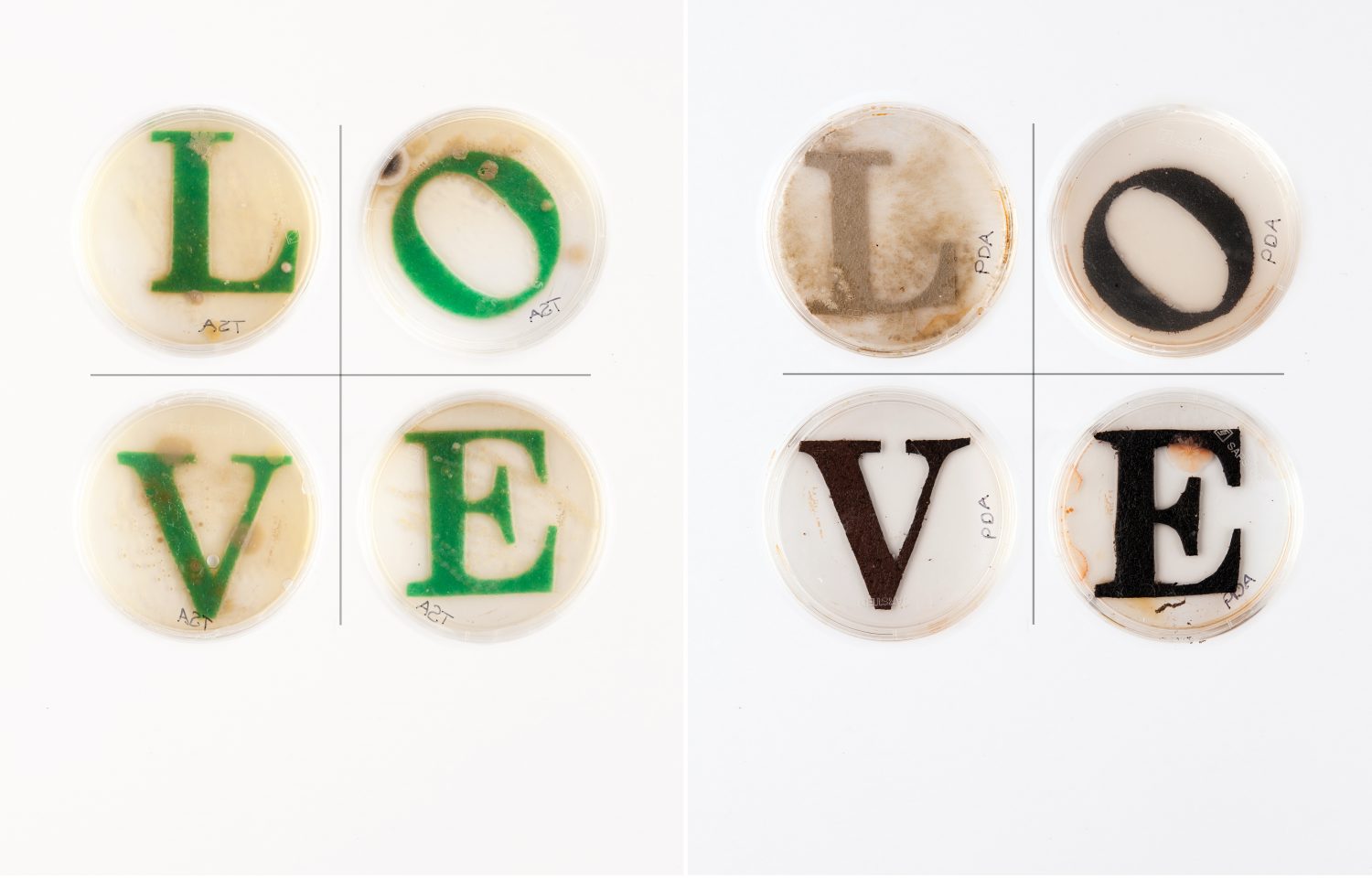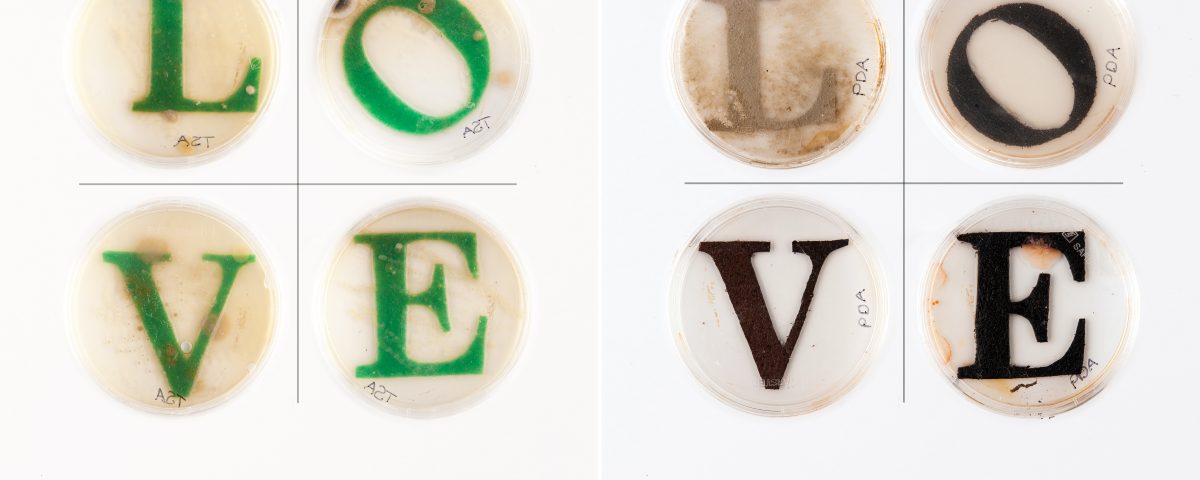Biotechnology is a Technology of Love...
Biotechnology is a Technology of Love... originates from my experience of human, interspecies and universal sensations of love working in laboratories, in gardens, kitchens, in my family, bioart and art communities, as well as hiking and camping in the outdoors. In this work, the letters L-O-V-E are cut out of leather and felt scraps and placed into petri dishes, and agar is poured over the letters. Of course, the letters are filled with microbes that bloom overnight in the incubator. The petri dishes are arranged in a similar formulation to Robert Indiana’s LOVE(1967) and photographed.
This work came from the realization that biotechnology could be conceived of as a technology of love. That the time, and care, and intimate knowledge and nudging it takes to sustain life in a hostile laboratory environment could be conceived of as a significant act of love. That scientists (and bioartists) are compelled to make substantial sacrifices (in terms of personal relationships, health, quality of life) to perpetuate laboratory activities that are so tedious and often counterintuitive to human life, vitality, and jouissance. Theoretically this work is influenced by reoccurring notions of ‘love,’ (Meadows, Randers, Meadows, 1972) ‘biophilia,’ (Wilson, 1984) and ‘ecosophy’ (Naess, 1973) found in environmental studies, environmental criticism, philosophy of science, animal studies, indigenous practices and resource management, and bioart texts. Notions of love are typically eschewed by academia and science as romantic, popular, or religious; but love can also be interpreted as a radical political act in the face of instrumental rationality. (Boggs, 2011; Hardt and Negri, 2009).
Image Credits:
1) Jennifer Willet, Biotechnology is a Technology of Love… Digital Prints, 2012. Image Credit: Arturo Herrera.


